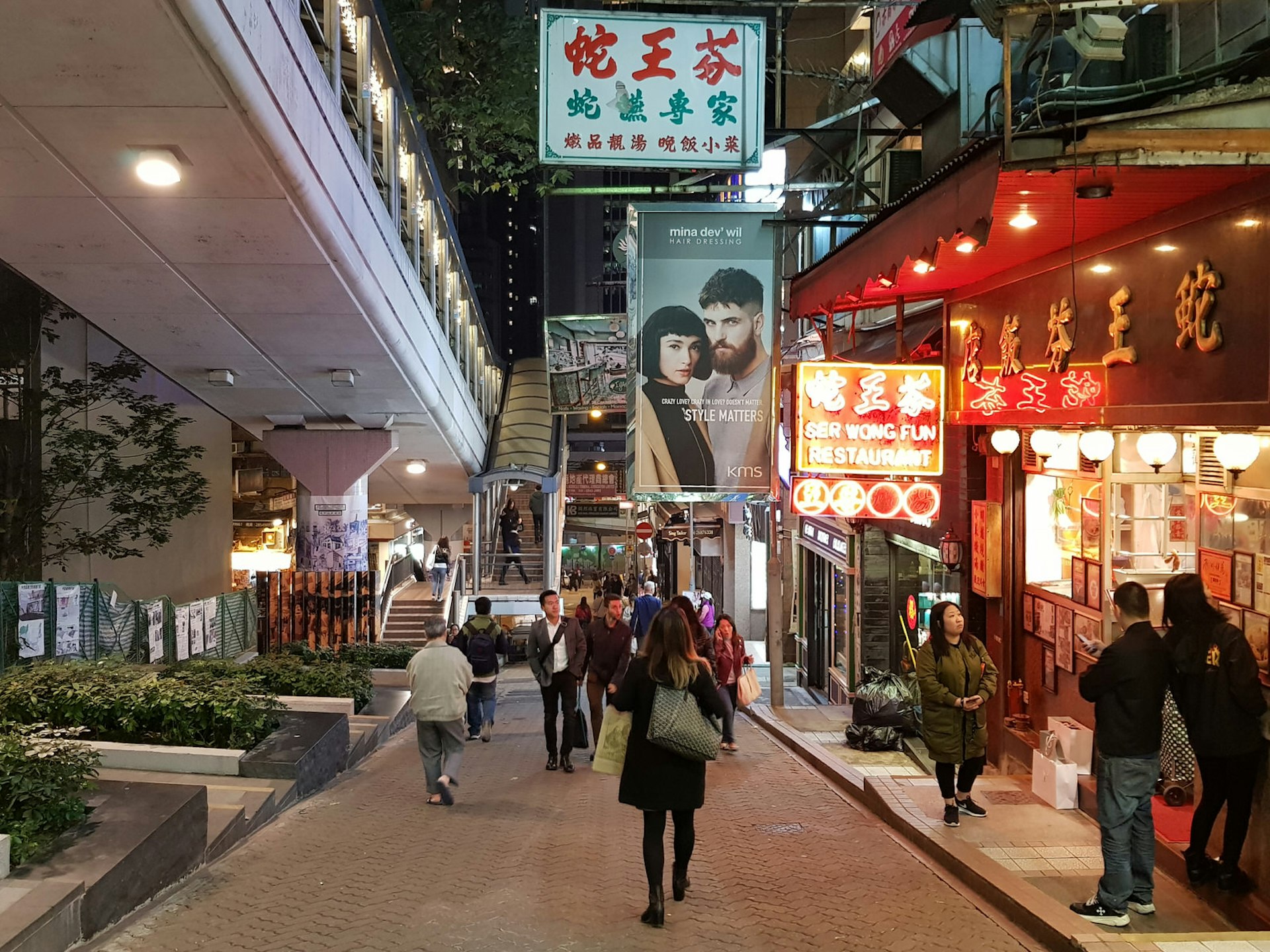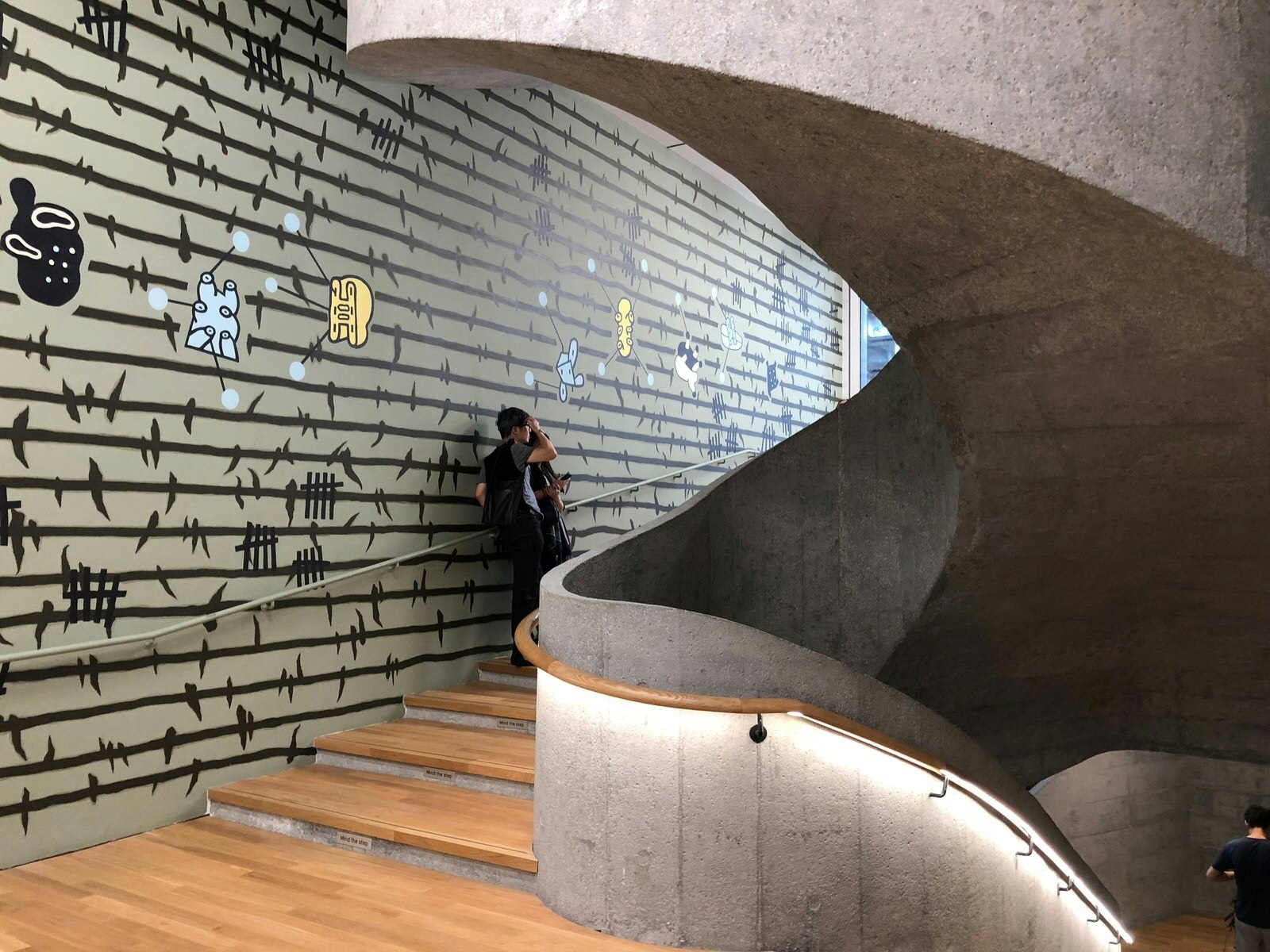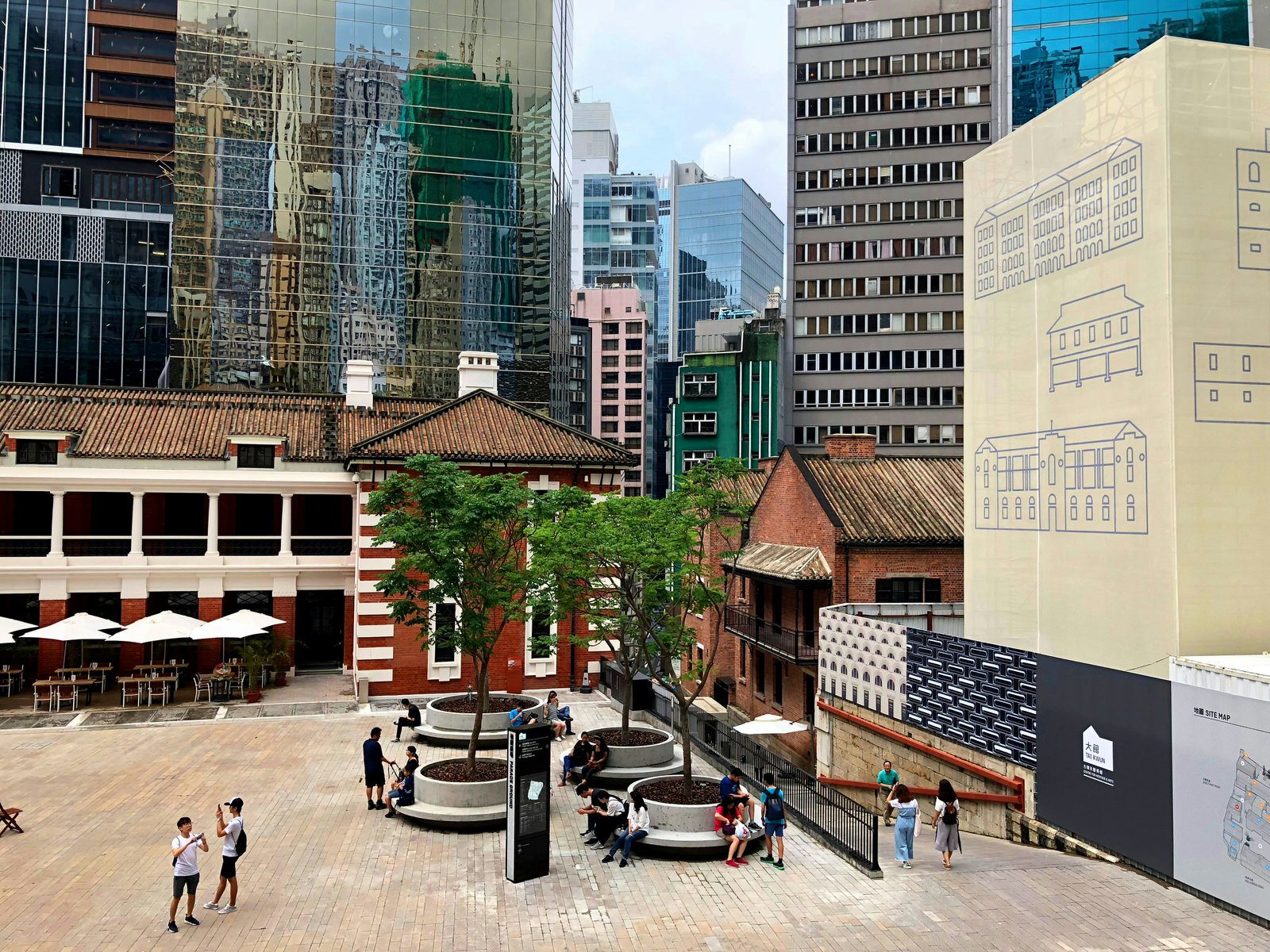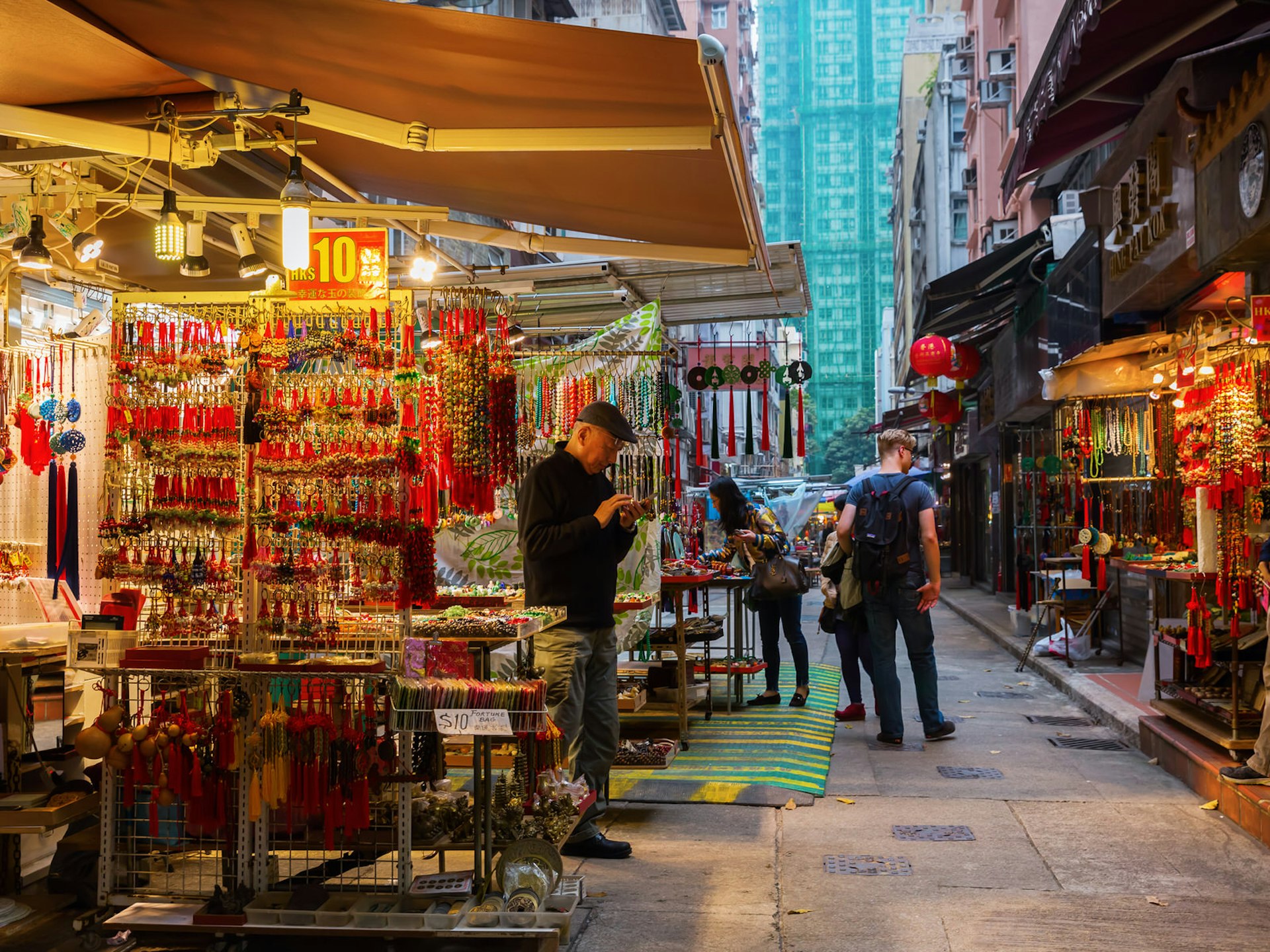Day in, day out, a waft of incense wafts, a thick stream of sharp-suited city workers, selfie-stick-wielding shoppers and grumpy bar hoppers pass under and over a small shrine on Peel St. as if it were invisible. No one ever seems to stop on this stepped slope in Hong Kong’s Central District, but the incense burners hanging from the shrine’s corrugated metal ceiling are always lit.
This is remarkable in a region that is rapidly shedding all its historical baggage and metamorphosing at breakneck speed.

The beating heart of Hong Kong’s banking district, the central neighborhood has been performing an ancient dance of old and new for decades. the house of HSBC Building Designed by Sir Norman Foster and IMPK Prismatic. Bank of China TowerIt is filled with skyscrapers that rise from a sea of luxury malls. Yet Peel St and its neighbors are among Hong Kong’s oldest streets, having been built in the shadow of Victoria Peak shortly after the British planted their flag on this subtropical slope in 1841.ThA turn-of-the-century port, the area was full of gambling, prostitution and opium dens. Today, colonial relics are buried in the cavities between the clenched teeth of the Middle Ages.
It was also Hong Kong’s main Chinatown, full of traditional shops and shrines. Peel St. was once known for its calligraphers, but now it’s part of modern-day Soho: jazz notes waft through a draped door as a punter pushes through, foodies a modern French steakhouse. Hover around waiting patiently for a table, and just above the roadside temple, a sign advertises local craft beer, illuminated by a neon glow.

The Asian Super-City of the 21st Century
Twenty-one years after the British left Government House, Hong Kong’s Central District has evolved into a showcase for the 21st-century Asian supercity, and the balance is tipped in favor of all that is new and shiny. 76% of all visitors to Hong Kong in 2017 were from mainland China, and the city is adapting to the travel trends and aspirations of this group. Luxury retailers, restaurants and high-end art dealers are replacing poky antique shops filled with Chinese tombware, and bars listed in the ‘World’s Top 50’ are attracting Instagrammers rather than bohemian revolutionaries. The first island of Hong Kong ‘Flash packing’ hostels (complete with co-working space) just opened on the borders of Soho and Sheung Wan.

Most notably in 2018, Central cut the ribbon. Tae Kwonthe phoenix that has risen from the ashes of the former Central Police Station on Hollywood Rd, houses the area’s first major art gallery.
‘The opening of Tai Kwon next door to our gallery has increased footfall,” says Jonathan Watts, whose small shop specializes in Asian fine art prints and antique maps. Watts Fine Artsis about to celebrate 30 years at this location in Central. ‘In the late 19th century, it would have been the red-light district with Lyndhurst Terrace,’ he muses. At this end of Hollywood Rd, in an area once world famous for its antique shops, Wattis is part of a shrinking tribe of independent businesses. Overnight rent hikes of 50% or more have become part of the joke in the neighborhood. ‘I believe we’ve been able to stay here for so long because we’re on the second floor of an old building, with no elevators or escalators and no real administrative services,” he says.

Tae Kwon’s Swan Song
Tae Kwon’s renovation may signal a new era for Central, but it’s also enhancing the area’s past. Its fort-like colonial facade is now bolder than ever and the heritage exhibits inside the complex – some permanent, some temporary – feel like a swan song to the history of a collective community through the fingers of the locals. Slipping. In May 2018, the flagship exhibition of the complex, 100 faces, involved interviewing 100 residents of Central who belonged to the former Central Police Station. They were accompanied by photographs by a local artist known as Flying Pig, who has spent his career recording Hong Kong’s old shops and buildings, and says traditional businesses are fast disappearing.
‘Hong Kong people don’t value the old Hong Kong culture,’ she says, citing social change as a key factor in why local businesses are closing. ‘The owner becomes very old, and may not want a son or daughter Heir to the shop.’ Other reasons he has identified while speaking to the community are high rents that force businesses to relocate, and government or developers taking back land for residential or commercial use.

Redevelopment Resentment
Hong Kong’s desperate desire for renewal and redevelopment is a particular problem for the shops and hawker stalls running around Central. Graham Street Market. Here, Cantonese still brush with morning shopping hours at the site of Hong Kong’s oldest wet market. The area has been earmarked for a HK$3.8 billion redevelopment for housing, retail and office space by the Urban Renewal Authority.
Piles of dust now strangle the narrow artery of market traders that straddles a building site between Peel and Graham Streets. Many family traders in the surrounding streets have already been forced to relocate. In September 2018, the Civic Party of Hong Kong launched a new appeal to save the site. After years of indifference, cultural heritage conservation is finally moving up the political agenda.

The stalled reconstruction of the nearby Central Market has also worried heritage preservation campaigners. This landmark of modernity is to be regenerated for an affordable cultural and retail development (by 2021-22), but has been vacant for over a decade. Beneath the market’s hoardings, the walkway that connects the site to the beginning of Hong Kong Central-Mid Level Escalator – the longest of its kind in the world, now undergoing an upgrade that is due to be completed in 2022 – is currently hosting an exhibition titled Nostalgia. Stories from Central. A series of sepia panels chart the history of Central’s original 13 lanes.
Finding Old Hong Kong
Central’s mix of new development and urban preservation plans promises change but also an exciting future for the neighborhood. Right now, pockets of old Hong Kong still remain. ‘Many shops and streets have changed rapidly in the last few decades. However, Central still has many older residents. His stories are still in the city‘ says Flyingpig. Tourists eager to glimpse the traditional culture of Central need only hit the streets. During the lunchtime rush, of Lam Wai Ching Goodspring Company Cochrane St can still be found serving bitter herbal tea to a steady stream of restless city workers. His grandfather did the same with a hawker cart here in the early 1900s. There are queues outside as early as 6 pm. Kao’s Restaurant. It is a central institution that started life as a Dae Pai Dong (street food stall) and has been making buttery tender beef brisket noodles on Gough St for over 80 years. Other survivors, viz If you (Established in 1948) and Kowloon Soy Company (1917), remain in spite of rising rent pressures.

And younger generations of Hong Kongers – like Flying Pig, born in the 1990s – are riding the wave of nostalgia. One of the most photographed spots on Hong Kong Island is a street art mural of old Hong Kong houses at the intersection of Graham St and Hollywood Rd, where Instagrammers have flocked so often that the paint is peeling off. . The wall was built by the home retailer in 2014. God, which specializes in producing Hong Kong memorabilia. Bars and restaurants, such as the immensely popular I have Le Foc.Also starting to channel old Hong Kong.
The rhythm of daily life in Hong Kong may be changing, but as business and development begin to draw from the city’s past, the dance between old and new continues.
